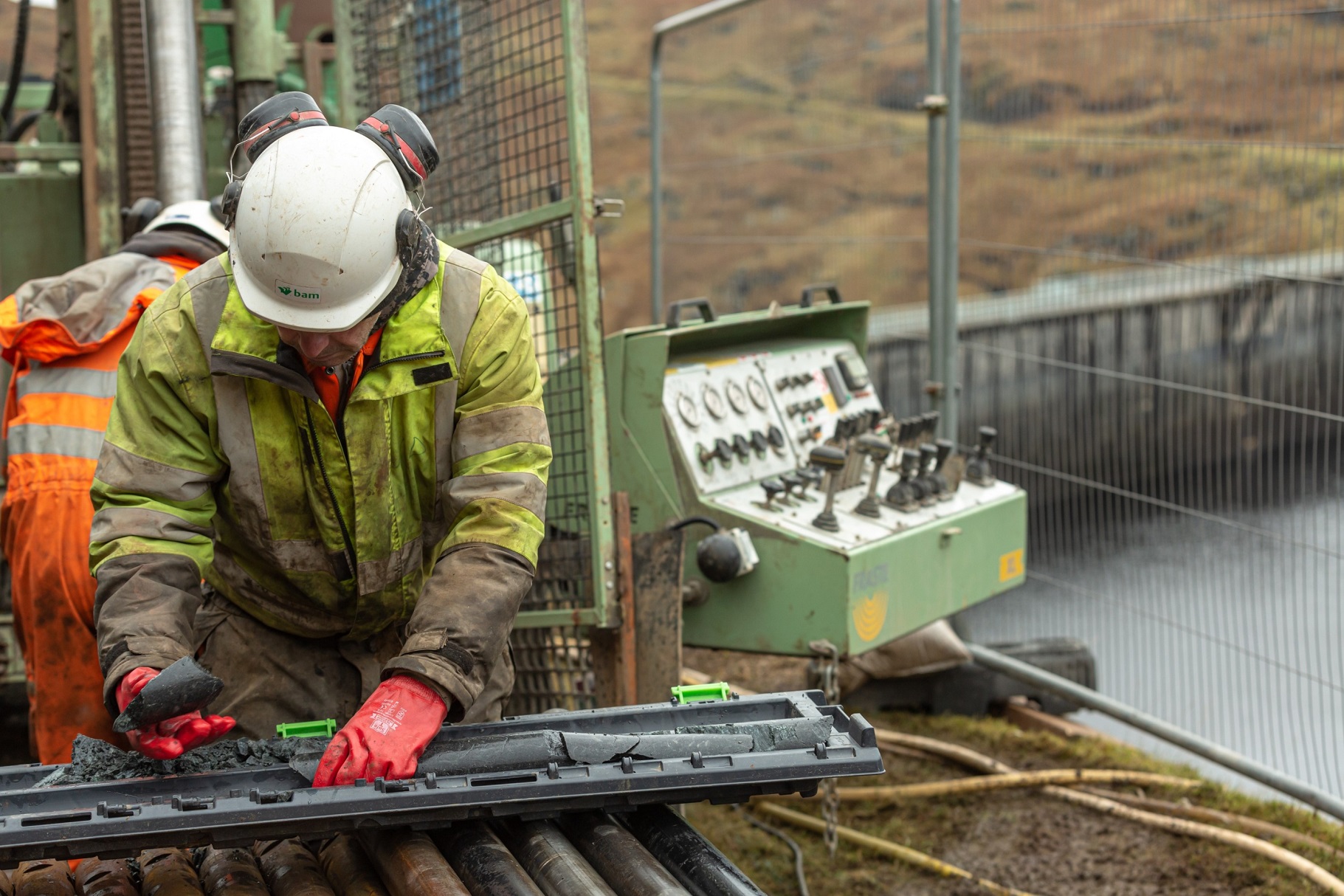PMI: Solid output growth maintained across UK construction sector in August

UK construction companies indicated a sustained rebound in total business activity in August, although the pace of expansion eased slightly since July, according to the S&P Global UK Construction Purchasing Managers’ Index (PMI).
Robust new order growth and a more supportive economic backdrop underpinned the latest recovery in construction output volumes.
Employment numbers stagnated as cost considerations meant that some firms opted to delay backfilling vacancies during August. However, construction companies remained optimistic about the near-term demand outlook. Exactly 50% of the survey panel anticipate a rise in output during the year ahead, while only 9% forecast a reduction.
At 53.6 in August, the headline PMI registered above the 50.0 no-change value for the sixth month running. The latest reading was lower than July’s 26-month high of 55.3, but still signalled a solid expansion of overall construction output.
Commercial activity was the best-performing segment (index at 53.7), despite the pace of growth slipping to its lowest since March. A number of firms noted a boost from rising sales enquiries and the release of new orders following the general election. Civil engineering activity (51.8) meanwhile expanded at only a moderate pace that was notably weaker than in July.
Residential work was the only sub-sector to gain momentum, with growth accelerating to its fastest since September 2022 (52.7). Higher levels of housing activity were supported by improving market conditions and lower borrowing costs.
August data indicated another robust increase in total now work across the construction sector. The rate of expansion was much stronger than seen on average in the first half of 2024. Survey respondents suggested that improving economic conditions and greater domestic political stability had lifted customer demand.
Strengthening order books and an upturn in sales pipelines underpinned positive sentiment regarding the year ahead business outlook. Confidence levels were much higher than at the same time in 2023. That said, some firms cited concerns about public sector budgets and longer-term prospects for infrastructure spending.
August data indicated that staffing levels were broadly unchanged, which ended a three-month period of expansion. Moreover, sub-contractor usage decreased for the first time since January. Some firms noted that elevated wage pressures had led to delays with staff hiring, while others commented on a lack of candidates to fill vacancies.
Purchasing price inflation meanwhile remained relatively muted in August, with cost pressures easing since the previous month. Construction companies cited rising raw material prices and shipping costs, but some suggested that competitive market conditions had helped to limit suppliers’ pricing power.
Input buying expanded at a solid pace, which extended the current period of growth to four months. Stronger demand for construction inputs reflected rising workloads and new project starts, although some firms noted destocking efforts. Meanwhile, suppliers’ delivery times shortened on average in August, but a number of survey respondents commented on constrained haulage capacity.
Tim Moore, economics director at S&P Global Market Intelligence, said: “The UK construction sector appears to have turned a corner after a difficult start to 2024, with renewed vigour in the house building segment the most notable development in August. Residential work expanded at the fastest pace for almost two years as lower borrowing costs and a gradual recovery in market conditions helped to boost activity.
“Commercial building was the best-performing part of the construction sector as the improving UK economic backdrop resulted in stronger order books, but the post-election bounce in demand faded somewhat in August.
“Another robust expansion of incoming new work was recorded in August, highlighting that new project starts are set to support a broader rebound in construction activity during the months ahead.
“Improving sales pipelines and a turnaround in demand conditions led to a relatively strong degree of business optimism across the construction sector. However, some firms cited a slowdown in civil engineering activity and concerns about the outlook for infrastructure work as constraints on growth expectations.”
Brian Smith, head of cost management at AECOM, said: “The reading reflects the continued positive summer for the prospects of the construction sector, aided by the stability created by the change in government.
“However, while a sixth consecutive month of growth suggests a relatively buoyant market, challenges lie ahead as we enter the autumn. Indeed, the prospect of planning reforms and the new housebuilding programme will give the sector renewed impetus, but spending cuts anticipated in next month’s Budget have the potential to impact government spending.
“Contractors will be hopeful that any decline in government spending is balanced out by a resurgence in private sector work, supported by lower interest rates later in the year.”
Kelly Boorman, national head of construction at RSM UK, said: “The headline construction PMI fell in August, driven by a sharp fall in civil engineering, which could reflect a quieter period over the summer months. But there remains a trajectory of a long-term upward trend, and the market is optimistic given the PMI is still well above 50. This, coupled with future activity and new orders sitting at 70.7 and 55.2 respectively, paints a picture of continued industry revival, particularly as the housing market continues to gain momentum, rising to 52.7. Mortgage approvals also recently reached their highest level in nearly two years, so consumer demand will further stimulate the housing market alongside the government’s reintroduction of mandatory targets.
“The industry is braced for increased volumes to achieve housing targets, with a focus on affordable housing provision. However, as the availability of subcontractors fell again in August, labour shortages and deployment across regions will impact capacity and the ability to deliver volumes. While increased demand provides greater stability and potential investment opportunities, businesses are waiting on the outcome of the National Planning Policy Framework consultation for clarity on the planning process, sustainable growth and better resource allocation.
She added: “Businesses are also hoping government’s incoming housing strategy will ease ongoing labour and funding tensions by providing access to overseas workers and infrastructure spend. Clear direction from government will help to reduce uncertainties and delays, increase funding, align with local infrastructure needs and ensure housebuilding targets are realised.”
Thomas Pugh, economist at RSM UK, said: “The drop in the construction PMI in August is down to the unwinding of the massive jump in civil engineering in July, which looks more like noise to us. Overall, the ongoing economic recovery in the UK is clearly now also being reflected in the housing market and the construction sector. Mortgage approvals jumped in July and annual house price growth picked up as well, clear signs of a revival in the housing market.
“Indeed, the housing balance rose to 52.7, the highest level since September 2022. As we expect the housing market to continue to improve over the rest of this year and into 2025 as real incomes rise and interest rates fall further. Indeed, the forward-looking balances, such as the future activity index and new orders are still high indicating optimism in the industry.
“What’s more, there was further good news for policy makers as the input prices balance dropped, suggesting that price pressures are easing in the construction sector as well as the services and manufacturing sectors. That bodes well for interest rate cuts later this year.
“Overall, despite the drop in August, the construction sector is likely to support economic growth over the next year.”
Jordan Smith, technical director at Thomas & Adamson, part of Egis Group, said: “The latest UK Construction PMI report paints a mixed, but broadly positive, picture. There is still optimism that the new government’s plans for housebuilding and infrastructure will broaden the construction sector’s recovery across the UK – the upturn in housebuilding should provide some comfort that those plans are turning into action.
“But that has been slightly tempered in the last month by the realities of the limits there are on public spending. Inflation continues to remain more subdued, which should help get more construction projects off the ground in the remainder of the year and moving into 2025 – particularly in sectors that have struggled to make the economics of development work in a high interest rate environment.”























